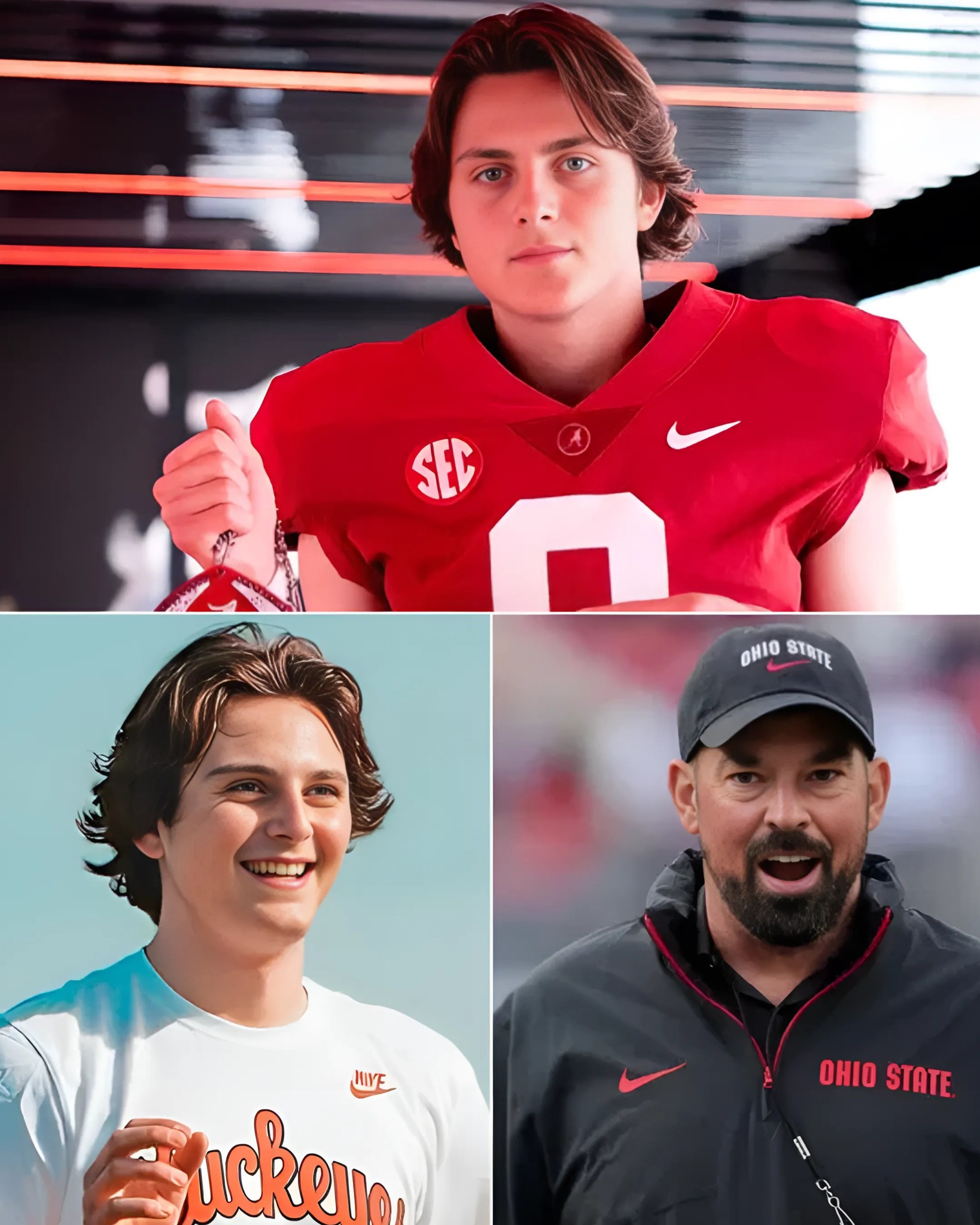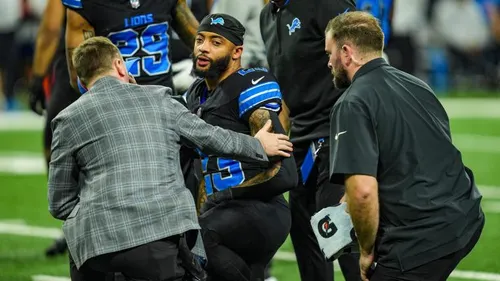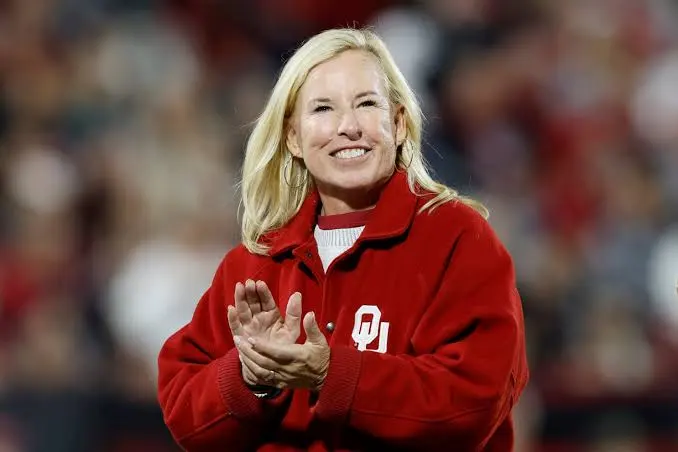Julian Sayin arrived in Columbus with as much hype as any quarterback Ohio State has landed in recent memory, but the harsh reality he faces is unlike anything he experienced at Alabama. The former five-star prospect, once hailed as one of the most polished passers in the country, now finds himself under the microscope as the Buckeyes look to defend their 2024 national championship without the player who helped deliver it—Will Howard.
Replacing a national title-winning quarterback is a tall enough order for any player, let alone one stepping into the cauldron of expectation that defines Ohio State football. But for Sayin, the challenge is amplified by the circumstances surrounding Ryan Day’s latest gamble—a $2 million investment in new offensive coordinator Brian Hartline, a decision that has sparked both excitement and skepticism within the program and across college football.
Howard, a graduate transfer from Kansas State, brought more than just experience to the Buckeyes’ offense last season. His dual-threat capability, physicality, and command of the system elevated Ohio State back to the summit of college football, delivering the program’s first national championship since 2014. Howard’s size, mobility, and poise under pressure made him a perfect fit for Day’s scheme, and his performance against Michigan, in the Big Ten title game, and ultimately in the College Football Playoff solidified his place in Buckeye lore.
Enter Julian Sayin, a quarterback with pedigree but different tools. Sayin’s game is built around precision passing, timing, and quick decision-making rather than the punishing running ability or escapability that made Howard such a headache for opposing defenses. Sayin stands at 6-foot-1, noticeably smaller than his predecessor, and while his arm talent is undeniable, early concerns about his ability to withstand the physical toll of Big Ten football have already surfaced.
Adding fuel to the uncertainty is the ascension of Brian Hartline to full-time offensive play-caller. Long regarded as one of the best recruiters and wide receiver developers in the nation, Hartline’s reputation among Buckeye faithful is nearly spotless. However, his lack of proven play-calling experience at the highest level brings its own set of unknowns. Day’s decision to entrust Hartline with the offense, backed by a hefty $2 million salary, underscores the program’s commitment to internal development but also exposes them to potential growing pains at the most critical position on the field.
The stakes could not be higher. Ohio State opens the 2025 season against a loaded Texas team with playoff aspirations of their own. The Longhorns possess one of the most aggressive defensive fronts in the nation, and their secondary is littered with future NFL talent. It’s the kind of matchup where every quarterback flaw is magnified, and every coaching decision is dissected.
Sayin’s spring performance offered glimpses of what made him such a coveted recruit. He completed 17-of-24 passes for 175 yards in the annual spring game, displaying sharp mechanics, a lightning-quick release, and an ability to distribute the ball efficiently to Ohio State’s arsenal of playmakers. Yet, the absence of live defensive pressure in that controlled environment leaves lingering questions about how Sayin will handle collapsing pockets and relentless defensive fronts when the real bullets start flying.
Complicating matters is the presence of Lincoln Kienholz, Sayin’s chief competition in the quarterback battle. Kienholz, while less heralded as a recruit, brings more mobility and toughness to the position, traits reminiscent of what Howard provided last season. Though Sayin holds a slight edge in terms of accuracy and polish, Kienholz’s dual-threat nature keeps him firmly in the mix, especially if the coaching staff feels the need to replicate Howard’s ability to extend plays and grind out tough yards with his legs.
For all of Sayin’s promise, the murmurs of doubt grow louder with each practice report suggesting he remains a work in progress in terms of handling pressure and reading complex defenses at game speed. Sources within the program suggest that while Sayin has impressed in film sessions and controlled drills, his ability to improvise under duress—a hallmark of successful Buckeye quarterbacks in recent years—remains unproven.
Hartline’s role in shaping Sayin’s development cannot be overstated. As play-caller, Hartline must craft an offense that maximizes Sayin’s quick-release passing while finding ways to mitigate the limitations of his mobility. That challenge becomes even more daunting considering the departure of several key offensive linemen from last year’s championship team, raising concerns about protection and pocket stability.
Critics of Day’s $2 million investment in Hartline argue that Ohio State could have pursued a more seasoned offensive coordinator with proven play-calling credentials, particularly given the high-stakes nature of the upcoming season. Day, however, remains adamant that Hartline’s deep understanding of the Buckeye offense and his unmatched ability to connect with players make him the ideal candidate to guide the next chapter of Ohio State football.
Still, the optics of the situation are hard to ignore. If Sayin falters and the offense sputters early—particularly against Texas—the narrative will quickly shift to whether Hartline was the right choice and if Sayin was rushed into a role better suited for a more seasoned or physically imposing quarterback.
The reality for Sayin is unforgiving. Fair or not, his performance will be compared to Howard’s at every turn. Every missed read, every sack taken, every three-and-out will fuel the notion that the Buckeyes are regressing at the sport’s most important position. Conversely, every crisp throw, every well-timed deep ball, every touchdown drive will buy him trust and belief from a fanbase desperate to remain at the pinnacle of college football.
For Hartline, the scrutiny is equally intense. His ability to scheme around Sayin’s limitations, keep defenses off balance, and manufacture explosive plays will determine not only the trajectory of the offense but likely his long-term coaching future. A successful transition from position coach to offensive architect could catapult him into head coaching conversations. A stumble, however, could erode the goodwill he has built and place added pressure on Day’s leadership.
Beyond the quarterback room, the Buckeyes possess championship-caliber talent at the skill positions. Star receivers, including returning All-Americans and emerging young threats, provide Sayin with plenty of options in the passing game. The running back corps remains deep and versatile, capable of easing the burden on a developing quarterback. The pieces are there for Ohio State to contend again—but only if the quarterback play meets the program’s lofty standards.
As fall camp approaches, all eyes will remain fixed on the quarterback competition. Sayin has the tools to succeed, but the road ahead is fraught with challenges—both internal and external. The Will Howard standard looms large, and the $2 million bet on Brian Hartline only intensifies the spotlight.
For Ohio State, the path to another national title begins with answering the quarterback question. For Julian Sayin, the opportunity is immense—but so too is the pressure. The coming months will reveal whether he can rise to the moment or whether the Buckeyes’ gamble at offensive coordinator will define their season for better or worse.



